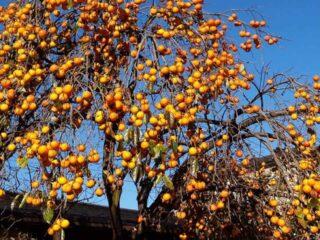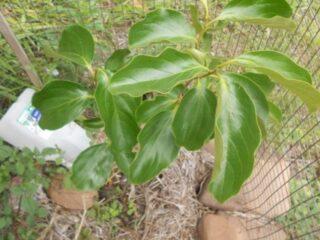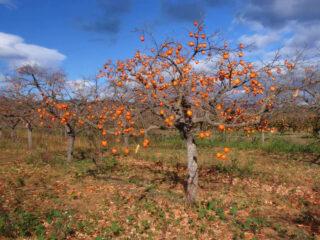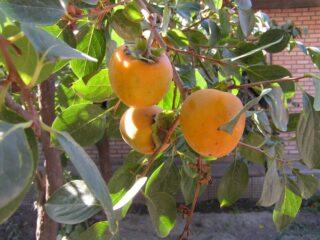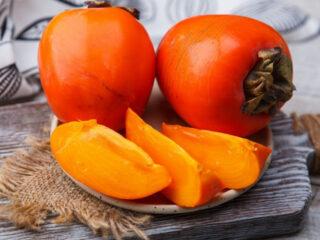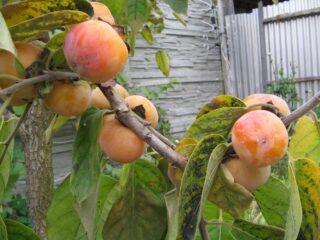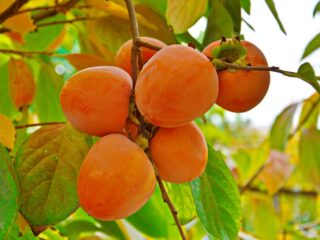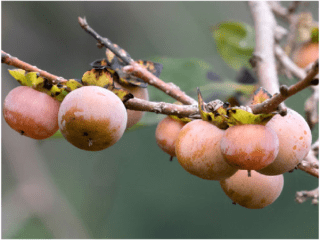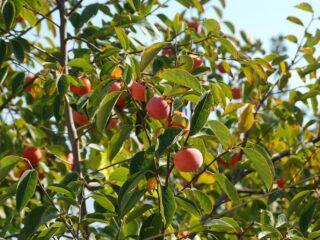Content
Persimmon Bull's Heart is a variety on a frost-resistant rootstock. Suitable for growing in temperate climates. The culture is photophilous, unpretentious in care, with good resistance to diseases and pests. A dessert variety, large-fruited, with a high tasting rating. Persimmons contain a large amount of vitamins and elements beneficial to the body.
Description of the Bull's Heart persimmon variety with photo
Persimmon is a heat-loving crop native to Asia, where it grows wild and is also cultivated commercially.
Wild varieties can be found in Russia only in the southern regions. Frost-resistant varieties have been created for gardens and farm plots in temperate climates.
Bull's Heart is a variety on the Virginia persimmon rootstock, zoned in the climatic conditions of the Moscow region. Recommended for the Middle, Central zone and North Caucasus. In Siberia and the Urals, fruits do not have time to ripen before frost.
Growing persimmon Ox heart in the shape of a tree. The crown is dense, wide, the leaves are bright green, oval, arranged alternately.The maximum height of the Bull's Heart persimmon is 5 m. But the variety reaches such sizes only in the South. In temperate climates, persimmons do not grow higher than 2.5–3 m.
Flowering and pollination
The plant blooms 3–4 years after planting in May, the cycle lasts until June. Flowers are formed in the leaf axils singly, rarely in several pieces. They have a bell-shaped, four-petalled cup. Inflorescences are yellow or beige. The shade depends on the sufficiency of lighting; in the sun it is lighter. There is only one ovule in each nest.
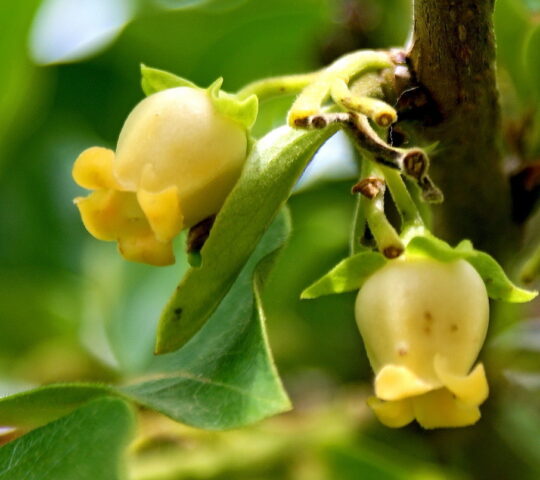
Oxheart persimmon reproduces by parthenogenesis and does not require cross-pollination or insect intervention
Additional planting of other crop varieties on the site is irrelevant.
Description of the fruit (shape, color, size, weight, taste)
Ox heart is classified as a large-fruited, dessert variety, with the following characteristics:
- the shape is heart-shaped, round, narrowed downwards;
- the peel is thin, with a glossy sheen, uniform, smooth, bright orange;
- the pulp is sweet, juicy, fibrous, orange at the stage of technical ripeness, light brown at the time of ripening;
- no seeds;
- the weight of the fruit is not the same. On one tree there are specimens weighing from 200 to 500 g, the average diameter is 8 cm.
This variety of persimmon is not transportable: ripe fruits are soft. They do not tolerate mechanical damage.
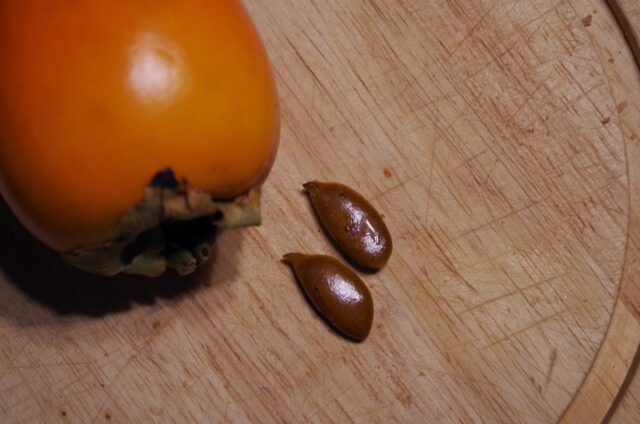
Persimmon is low-calorie (2 kcal), so it is included in the diet menu
Terms of ripening and fruiting
Ox heart is classified as a mid-season variety. The fruits ripen from mid to late October.Persimmon bears fruit on the shoots of the current season. In order for the flowering to be intense and the plant to have enough light, the tree undergoes anti-aging pruning at least once every five years. Remove old branches and shoots growing inward. The fruiting rate depends on this event.
According to the varietal characteristics, Bull's Heart is an early ripening variety. Persimmon produces its first harvest at the age of three. Reaches full yield by five years. With timely feeding, watering and treatment against possible pests, 60–80 kg of fruit can be harvested from an adult tree.
Frost resistance of persimmon Ox heart
The variety is grafted onto a frost-resistant rootstock. According to the varietal characteristics, it resists frosts of -25–30 without loss0 C. These indicators are characteristic of a plant of reproductive age. Seedlings after planting and in the next two years must be protected from cold in the fall.
Mainly the root system and the grafting point are affected. In temperate climates, the plant is earthed up in the fall and covered with mulch. The standard is wrapped with any covering material. For the South, this measure is not relevant; in warm climates, persimmons overwinter without additional measures.
Growing persimmon Ox heart
In terms of agricultural technology, the variety is no different from any frost-resistant representative of the crop. For persimmons, south-eastern slopes or flat terrain are allocated, protected on the north side by large trees or the wall of a building. Exposure to the north wind in spring causes significant damage to the plant. The tree blooms relatively early, cold winds and possible return frosts lead to the fall of the buds.
Persimmon is moisture-loving, but with constantly high soil moisture there is a risk of root rot and plant death.The site is chosen to be drained; wetlands are not considered.
The Ox Heart variety should not be planted in the shade; persimmons should be in the sun throughout the daylight hours. Without a sufficient amount of ultraviolet light, the plant develops poorly and does not bear fruit. The composition of the soil for persimmons should be neutral or slightly alkaline, fertile, aerated. The variety is propagated by seedlings. In rare cases, it is possible to grow planting material from a seed.
Seeds
It is quite problematic to propagate Ox's heart by seeds; 90% of the total harvest does not contain seeds. A seed in a berry is rather an exception to the rule. If you do manage to collect the seeds, there is no guarantee that they will sprout.
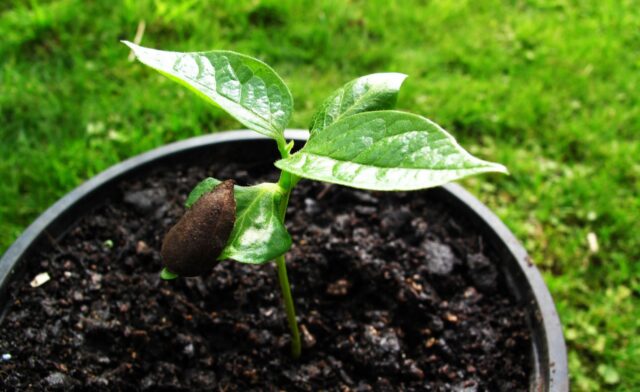
Persimmon seeds are large, cone-shaped, dark brown
How to do it:
- Planting material is taken from a well-ripened fruit.
- Wash to remove remaining pulp fibers.
- Wrap in a damp cloth or place in wet cotton wool, then in a packaging bag and leave to soften the hard shell for 10 days. Make sure that the material is always damp.
- Make a mixture of peat, compost, sand and soil in equal parts. Add ash.
- Each seed is planted in a separate container with a volume of approximately 0.5 liters.
- The container for the seedling is filled with soil, a 3 cm depression is made in the center, and a seed is placed in it.
Place in a lighted place, located away from heating devices. Room temperature will do. Water once a week.

Self-grown Oxheart seedlings are planted in open ground at the age of one year
In the spring, when the temperature remains stably above zero, persimmons are taken out to the site and gradually adapted to direct sunlight.
Seedlings
Buy Ox's Heart planting material at two or three years of age. It should be in a shipping container or with a ball of earth. If the root system is open, pay attention to its condition. It should be well developed, without dry areas and mechanical damage.
Before planting, the persimmon root is treated with an antifungal agent and placed in a growth stimulator for two hours.
Ox's heart is planted in spring (April) or autumn, so that there is at least a month and a half left before frost. This period is necessary for rooting.
The planting hole for the Bull's heart is dug on the day of planting:
- Mix the turf layer of soil with compost and sand in equal quantities, add a nitrogen-containing agent.
- A drainage layer is placed at the bottom. The nutrient soil mixture is divided into three parts. 1/3 is poured to the bottom, making a cone-shaped mound.
- A stake is driven in the center.
- The seedling is placed in a hole, grafted to the south, and the roots are distributed over the embankment.
- Fill it with some soil, compact it, fill the hole completely, and compact it.
- The trunk is fixed to the stake with twine and watered abundantly. Every other day, the tree trunk circle is mulched.
How to care
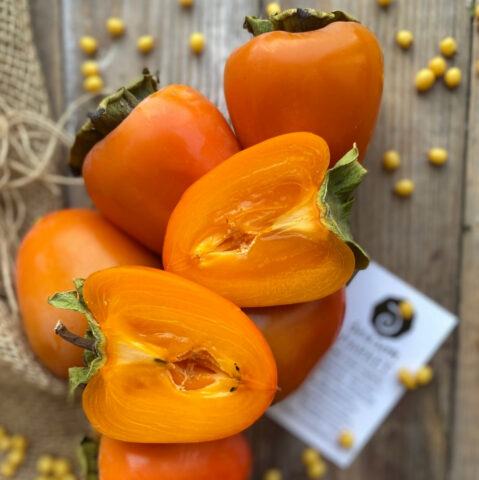
You can get a persimmon harvest only with proper care of the crop.
Agricultural technology for growing Ox heart:
- Persimmons are watered depending on precipitation in the region. Do not allow the soil to become waterlogged or dry out.
- Fertilizers are applied: nitrogen-containing fertilizers in the spring, potassium fertilizers during flowering, superphosphate is fed at the time of fruit set, and mineral fertilizers are used at the end of the season.
- At the beginning and at the end of the season, Ox's heart persimmons are treated preventively against fungal infection. If pests appear, timely measures are taken to eliminate them.
In the spring, the Bull's Heart persimmon is inspected, the mulch is replaced, and dry or frost-damaged branches are pruned.
Harvesting and storage
Harvest at the end of October. When removing from the tree, the fruits are taken by the receptacle so as not to leave dents on the surface, and the legs are torn off using the principle of screwing. To prevent persimmons from touching, they are placed in a box with separate cells.
The shelf life of Ox's Heart is short. At zero temperature with minimal humidity, fruits can be stored for up to three months. At room temperature – no more than two weeks. Therefore, after harvesting, persimmons are immediately processed.
Conclusion
Persimmon Bull's heart is a sweet, dessert variety. The berries are consumed fresh and are suitable for processing into preserves and jams. Low-alcohol tinctures are prepared from the fruits. The agricultural technology of the variety is standard for the crop. If the growing requirements are met, Ox Heart feels comfortable in a temperate climate and produces a good harvest.
Reviews of persimmon Ox's heart

